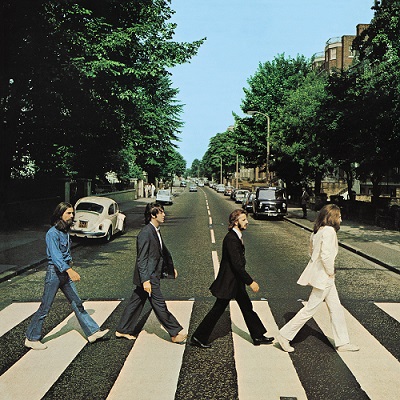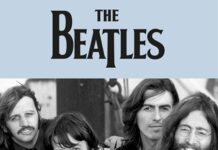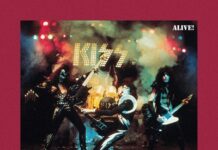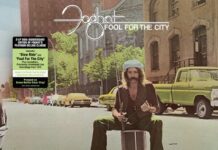Following 50th anniversary editions of Sgt. Pepper’s Lonely Hearts Club Band and THE BEATLES (aka The White Album), Apple, in conjunction with Capitol/UME, has issued the Beatles’ Abbey Road Anniversary Edition 50 years later to the day. Like its anniversary predecessors, the package features the original album remixed in stereo and 5.1 surround (and for the first time, Dolby Atmos) by Giles Martin and Sam Okel, The set is filled with loads of extra goodies like previously unreleased outtakes and demos. Three CDs and a single Bu-ray Disc are all contained in a hardbound, 100-page book with a forward by Paul McCartney, numerous essays, track-by-track details, previously unpublished photographs (including a few taken by Linda McCartney), images of handwritten lyrics, sketches, a George Martin score, recording sheets, tape boxes, print ads, the works. For any Beatles fanatic, Abbey Road Anniversary Edition is like winning the lottery is some wondrous, comforting way. They know what I mean.
As their swan song to the world, Abbey Road sealed the legacy — forever set in cobblestone and zebra stripes and brilliant to the very last note. But it wasn’t easy to squeeze one last album out of Mssrs. Lennon, McCartney, Harrison and Starr. They were barely speaking to one another and becoming disenchanted with the whole collective attitude that had shaped their very existence. Instead, the Beatles were drifting apart — musically, philosophically and personally. Throw in the business woes stirred up by Apple and Allen Klein, and it’s no wonder the tensions during THE BEATLES (aka The White Album) and Let It Be was coming to a head. Even longtime producer George Martin had had enough. The ever-chipper McCartney, however, refused to let sleeping dogs lie and persuaded Martin to come along and make one more record “like we used to.” Though it wasn’t exactly a communal affair on par with the days of old, Abbey Road exemplifies a pinnacle in a career that consistently busted the barometer for seven glorious years.
To get Abbey Road made, a number of disagreements and differences of opinion had to be sorted out and dealt with. To begin, John Lennon was more interested in recording straight ahead rock songs with minimal production value. McCartney, on the other hand, had grander illusions. Having successfully taken the group through the whimsy of Sgt. Pepper’s Lonely Hearts Club Band, he wanted to piece together a medley of songs with a heavy, conceptual bend. Fortunately, a compromise was agreed upon, and the album ultimately comprised both singular songs and a medley.
Lennon’s chart-topping, Timothy Leary/Chuck Berry inspired “Come Together,” as well as “I Want You (She’s So Heavy),” the Beatles’ longest song aside from “Revolution 9” (if you want to call that a “song”), certainly drove the point home. But the balance achieved with McCartney’s string of songs that includes “You Never Give Me Your Money” and “She Came In Through The Bathroom Window” mixed in with Lennon’s “Sun King” and “Polythene Pam” is only half the story. McCartney assumes the reins through “Golden Slumbers” and “Carry That Weight” (and a brief reprise of “You Never Give Me Your Money”) into the album’s poetic closer, “The End.” Then, as an afterthought, there’s Paul McCartney again with just his acoustic, strumming “Her Majesty” for a few seconds before getting cut off.
Maybe the real star of Abbey Road is George Harrison, whose emerging songwriting skills resulted in no less than two of the album’s strongest cuts: “Something” and “Here Comes The Sun.” The former, of course, would go on to become one of most revered tunes (and a favorite of Frank Sinatra’s) in the Beatles songbook. Ringo Starr also contributed a song of his own, sprightly entitled “Octopus’s Garden,” and immortalized a simple and tidy drum solo on “The End.”
The Abbey Road Anniversary Edition remixes may not sway the purists, but audiophiles and probably anyone who listens closely enough will recognize subtle sonic enhancements of an album that already sounded extraordinary. Notably, the Moog synthesizer on “Maxwell’s Silver Hammer,” “Here Comes The Sun” and “Because” angles for prominence. Starr’s tom toms cut through with far more clarity on “Come Together,” “Something” and “The End.” If you can’t get enough of those angelic Beatles harmonies, you’ll want to queue up “Here Comes The Sun” and “Sun King.” The guitars are brighter and bulkier on “I Want You (She’s So Heavy),” “Polythene Pam,” “She Came In Through The Bathroom Window,” and especially “The End,” where the bass grinds into overdrive and Lennon, McCartney, and Harrison all trade crunchy and distorted riffs like the brothers they were, proving to one and all they were the tightest little rock and roll band out of Liverpool.
In terms of volume, the two CDs (or LPs) of additional songs doesn’t cover the breadth of 2018’s anniversary edition of The BEATLES (aka The White Album), but there are more than enough selections to make even the most casual fan salivate. Rough takes of “I Want You” were apparently so loud at the Trident Studios session that the neighbors complained. Not to be outdone, Lennon advises the band to run through one more “loud” version (which opens the third disc) with Billy Preston wildly soloing away on the organ. A demo of McCartney’s “Goodbye” (later a hit single for Apple artist Mary Hopkin), along with early takes of “The Ballad Of John And Yoko” (with only Lennon and McCartney) and “Old Brown Shoe” (a Harrison-penned B-side), are the only three songs here that weren’t on Abbey Road. Bits and pieces of the tracks that made the album capture a band working out the kinks and refining the material. The strings-only versions of “Something” and “Golden Slumbers” resonate as the perfect underlining to the songs, giving George Martin his due as an integral part of the process.
Fifty years on, Abbey Road remains a universal treasure, a joyful celebration about everything the Beatles did right — magical harmonies, first-class songwriting, and tight interaction instrumentally, vocally, and everywhere else in between. Forgoing lofty titles like Everest or Billy’s Left Boot, the album earned its name when no one in the group or their immediate circle felt motivated enough to come up with anything else. In short, it was a tribute to the studio where they had grown into the world’s biggest band. All it took was a half hour photo shoot on a crosswalk a few yards from the studio, and the front cover was a done deal. It would go on to become one of the most parodied photographs in pop culture, bustling with supposed clues to McCartney’s eminent demise. In reality, it was the last word from a phenomenon that still echoes with each generation.




















